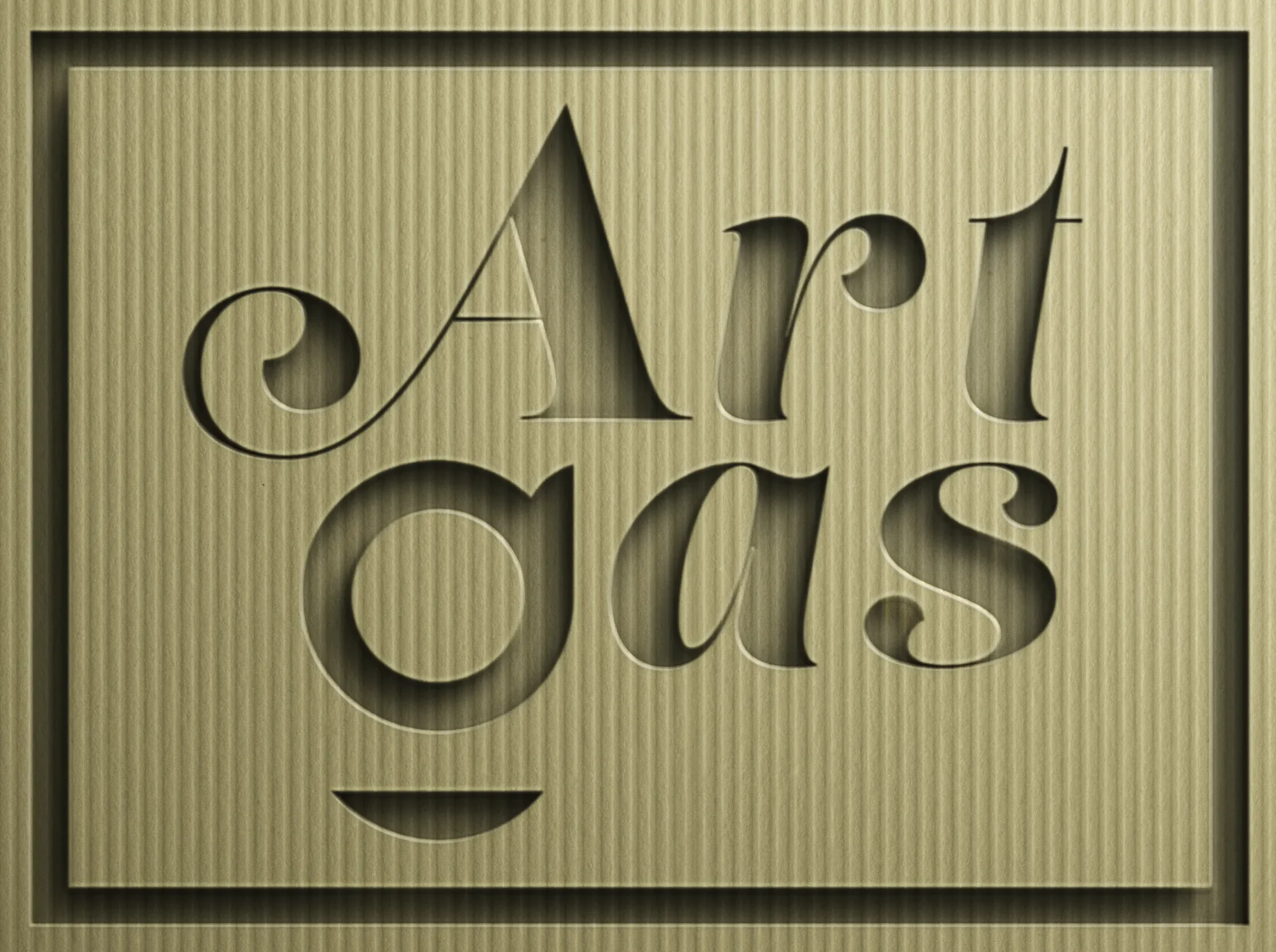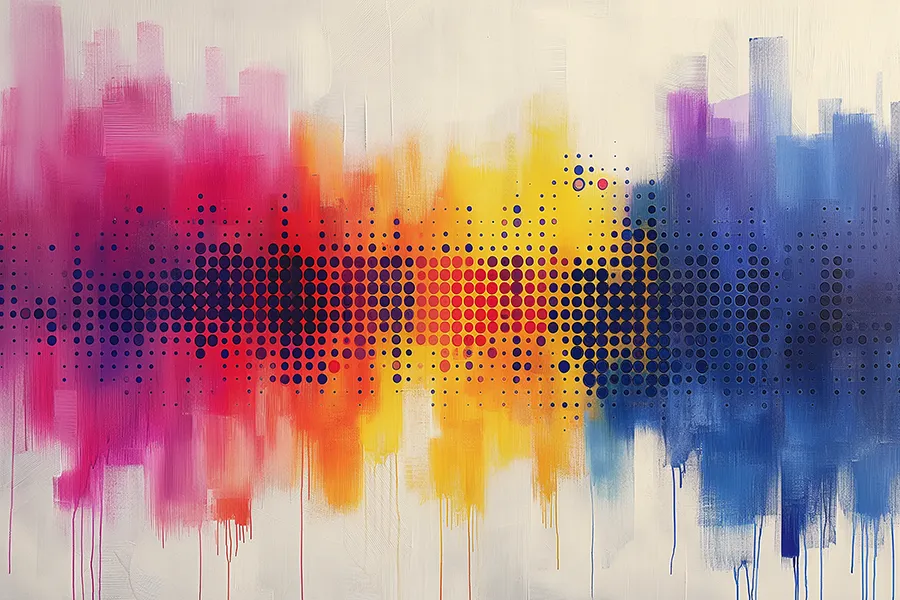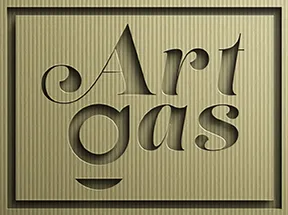Unveiling the Charm of Abstract Halftone Dot Art
Introduction
In the vast expanse of the art world, abstract halftone dot art emerges as a fascinating blend of traditional printmaking techniques and contemporary digital flair. This distinctive art form, characterized by its use of dots to create gradients, shadows, and textures, offers a unique visual experience that captivates the imagination. Its appeal lies in its ability to convey complexity and depth through simplicity, making it a beloved choice among artists and art enthusiasts alike.
Overview and History
Halftone dot art originated in the late 19th century, primarily as a method for reproducing photographs and illustrations in newspapers and books at a time when full-color printing was cost-prohibitive. The technique involves breaking down images into a series of dots of varying sizes and spaces. The closer the dots are placed together and the larger they are, the darker the area appears. This method allowed for a semblance of grayscale within a binary color scheme, typically black and white. As technology advanced, this technique was embraced by artists as a medium for creative expression, leading to the birth of abstract halftone dot art.
This art form gained popularity for its ability to bridge the gap between traditional printmaking and the burgeoning field of digital art. Its versatility and the unique aesthetic of dot patterns appealed to a wide audience, from graphic designers to fine artists.
Why Is Abstract Halftone Dot Art Popular?
Abstract halftone dot art is popular for several reasons:
- Visual Impact: The stark contrast and intricate patterns create compelling imagery that draws the viewer in.
- Versatility: It can be applied in various mediums, from digital illustrations to traditional canvas paintings.
- Nostalgic Value: It harks back to the early days of print media, giving it a timeless appeal.
- Accessibility: The digital evolution of this style makes it accessible to artists of all skill levels.
Who Does It Appeal To?
This art style appeals to a broad spectrum of individuals:
- Artists and Designers: Who appreciate the blend of traditional and digital techniques.
- Collectors and Enthusiasts: Looking for unique and visually striking pieces.
- Graphic Novelists and Illustrators: Who use the technique for storytelling and visual narratives.
Top 10 Classic Variations of the Style
- Monochrome Halftone: Utilizes a single color with varying dot sizes to create depth.
- Duotone Halftone: Combines two colors for more complex and vibrant images.
- Gradient Halftone: Focuses on smooth transitions between dots to mimic gradients.
- Geometric Halftone: Uses dots in specific geometric patterns for a stylized effect.
- Textured Halftone: Incorporates texture within the dots for added dimension.
- Photorealistic Halftone: Aims to closely mimic photographs through precise dot placement.
- Pop Art Halftone: Inspired by the pop art movement, featuring bold colors and graphic designs.
- Abstract Expressionist Halftone: Emphasizes emotional expression through abstract dot patterns.
- Minimalist Halftone: Uses minimal dot density for a clean and simplistic look.
- Experimental Halftone: Combines various techniques for innovative and unconventional artworks.
Top 10 New Digital or AI Variations of the Style
- 3D Halftone: Utilizes digital tools to create three-dimensional effects with dots.
- Animated Halftone: Incorporates motion into halftone patterns for dynamic artworks.
- Interactive Halftone: Uses digital interfaces to allow viewer interaction with the dot patterns.
- Augmented Reality Halftone: Combines halftone art with AR technology for immersive experiences.
- Generative Halftone: Employs algorithms to generate unique halftone patterns automatically.
- Holographic Halftone: Creates hologram effects using dot patterns and light.
- Digital Mosaic Halftone: Mimics the look of traditional mosaics with digital dots.
- Neon Halftone: Uses bright, neon colors for a futuristic take on the classic style.
- Pixelated Halftone: Blends pixel art with halftone techniques for a retro digital look.
- Virtual Reality Halftone: Offers a VR experience, allowing viewers to explore halftone art in three-dimensional space.
10 FAQs
- What is abstract halftone dot art?
- It’s an art form that uses dots of varying sizes and spacing to create images, often with abstract themes.
- How is halftone art created?
- Traditionally, it’s made using screens or stencils in printmaking, or digitally using software that simulates the dot patterns.
- Can halftone art be colored?
- Yes, while it began as a black-and-white technique, modern variations include vibrant colors.
- Is halftone art easy to make?
- The basics can be learned relatively easily, especially with digital tools, but mastering the technique requires practice.
- What materials are needed for traditional halftone art?
- Ink, paper, and a screen or stencil for printmaking. Digital versions require graphic design software.
- How does digital halftone differ from traditional?
- Digital halftone offers more control and precision, allowing for complex and detailed images with ease.
- Can I make halftone art from photos?
- Yes, converting photos to halftone art is a popular technique in both digital and traditional forms.
- What’s the significance of dot size in halftone art?
- The size and spacing of the dots determine the darkness or lightness of areas, creating depth and dimension.
- Are there any famous halftone artists?
- Artists like Roy Lichtenstein are renowned for their use of halftone in pop art.
- How can I start creating halftone art?
- Begin by experimenting with digital graphic software that offers halftone filters or by learning basic screen printing techniques.
Noteworthy Artists and Resources
- Roy Lichtenstein: A pioneer in pop art, known for his use of halftone dots.
- Jeffrey Sgroi: – Creator of the famous 3-tone halftome
- Andy Warhol: Though not exclusively a halftone artist, his work in pop art often utilized similar dot patterns.
- Behance – Dribbble – Bubble: Online platforms where contemporary artists showcase digital halftone artworks.
- Adobe Photoshop and Illustrator: Software that offers tools for creating digital halftone effects.
Conclusion
Abstract halftone dot art stands as a testament to the enduring allure of combining traditional techniques with modern innovation. Its versatility and visual appeal make it a compelling choice for artists and collectors alike. At Art Gas, we celebrate the richness of this art form, offering a curated collection that showcases both classic and contemporary interpretations. Our selection is a testament to the timeless beauty and ongoing evolution of halftone art, making it a must-see for enthusiasts and newcomers to the art world alike.
Main SEO Keywords
- Abstract halftone dot art
- Halftone art techniques
- Digital halftone art
- Traditional halftone printing
- Contemporary


